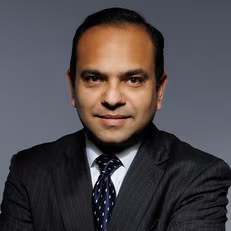
Slash Your Cloud Bill with Deloitte’s Three Stages of FinOps

(WHYFRAME/Shutterstock)
As public cloud spending approaches the $1 trillion mark in 2025, there’s little doubt that the cloud remains very popular among customers. However, as cloud providers’ revenue and customers’ cloud bills continue to grow faster than 20% annually, some customers are looking for ways to tame their bills. That’s where Deloitte Consulting’s Cloud Engineering practice comes in.
The amount of money wasted in the cloud is a matter of some debate, but few contest that it’s an issue. For instance, the former CTO of Teradata stated that companies moving their data warehouse to the cloud overpay by 50% in the first year, while a 2023 Flexera report concluded that 28% of cloud spend goes for naught.
Deloitte Consulting estimates that the average company wastes somewhere between 20% and 40% of their cloud spending. If Gartner’s estimate that cloud spending grows 21% this year to $723.4 billion is correct, that translates into the potential for cloud wastage of $147 billion to $289 billion this year alone.
Those are staggering figures, to be sure, and they definitely keep Akash Tayal busy. As the head of Deloitte Consulting’s Cloud Engineering practice, Tayal advises Deloitte clients about how they can cut into that wastage figure and save their companies millions by streamlining their approach to the cloud.
Not every enterprise is the same. Some are new to the cloud and others are cloud sophisticates. Depending on where they sit in their cloud journey, Tayal advises them to start with one of three different paths to achieving FinOps glory and reducing their cloud spending.
Cloud Savings
The most basic path to cutting cloud waste is to adopt the cloud provider’s savings plan. According to Tayal, this is the first thing that every customer should adopt, as it can cut your cloud spend by at least 10%.
Each cloud provider offers a different plan, but they all work in similar ways to get customers to commit to buying more compute and storage in exchange for a discount from the standard on-demand rate. For instance, AWS‘ “compute savings plans” can knock up to 66% off customers’ cloud bills compared to using on-demand computing. Google Cloud says its “committed use discounts” (CUDs) can cut bills by anywhere form 28% to 46%.
“The first bucket of purchasing tactics is the low hanging fruit in my mind, because you actually don’t have to make technology changes on your side,” Tayal tells BigDATAwire in a recent interview.
But getting the remaining 30% of potential savings is going to require some work.
Waste Management
Tayal’s second bucket of FinOps savings involves analyzing the customers’ cloud bill and becoming more active about analyzing what’s going on.
“Did I overprovision? Did I look at the wrong cores when I got it? Am I using the wrong storage techniques for this? Is the workload commensurate with these?” he says. “That’s what I would qualify in the waste management space.
 Tayal’s waste management techniques also include the customer becoming more active about responding to instances of waste and runaway workloads, such as big SQL queries run amok. This requires adopting an alerting and tagging system, which most FinOps tools provide. The cloud providers themselves also provide this tooling.
Tayal’s waste management techniques also include the customer becoming more active about responding to instances of waste and runaway workloads, such as big SQL queries run amok. This requires adopting an alerting and tagging system, which most FinOps tools provide. The cloud providers themselves also provide this tooling.
“If a particular business unit had an assigned budget for the month, and in three days of the beginning of the month they have already blown past that, is somebody getting an alert?” Tayal says. “Is somebody getting a nastygram to say ‘Hey, man, just go back and look at that workload. Something is off because this was not our average run rate in the month.’”
The waste management analysis should highlight problems with the customers cloud workloads, and could bring an additional 10% savings, Tayal says. But this approach doesn’t make any changes to the workloads themselves, which is where the biggest savings can be found, and which he saves for the last bucket.
Consumption Management
The third FinOps bucket is the hardest to adopt, according to Tayal, but gives the biggest potential payout. It involves analyzing the resource consumption patterns for a particular workload and making changes to the workload to maximize the use of cloud resources.
It may sound simple, but consumption management is an invasive approach that requires the skills of a software architect and possibly consulting services from a company like Deloitte. In some cases, it involves re-skilling engineers with FinOps principles, to get them thinking differently about how best to build systems in the cloud–and then actually rebuilding it for the cloud.
Many of the apps that customers want to run in the cloud were taken directly from on-prem. They may sport older client-server architectures that run in virtual machines and use always-on databases, as opposed to more modern microservices-based architectures running in containers, or even serverless databases such as Amazon Athena. Running older apps on today’s cloud hardware is recipe for poor efficiency and higher costs, Tayal says.
“[If] they moved their entire workloads, as in lift and shift, into the cloud, they are going to be paying more,” Tayal says. “They didn’t apply the waste management and consumption management techniques. They are definitely going to be paying more. It’s the re-architecting your cloud, your on-prem workloads to fit the cloud needs.”
Set Your Baseline
In many cases, rearchitecting the application for the cloud–or building a new app from scratch–will be an expensive project. However, it’s a necessary exercise that the biggest companies must go through in order to save hundreds of millions of dollars in cloud spending annually.
“The first two you can do relatively easily, but the third one, consumption management, is where you really need to look under the hood and see how the application was architected, which services am I consuming, and what’s driving the use of those services,” Tayal says. “And that’s where you need to really have an architect look into it.”
One of the most important (and difficult) variable in success for these architecting projects, Tayal says, is determining the proper baseline for success. However, only about half of Tayal’s clients are able to successfully establish their baseline KPIs or metrics, he says.
“Whenever we are doing a cloud native build of a new app or an existing one, we always go to the client and ask for baselining,” he says. “What’s the expectation of the business? It could be I have reduced my claims cost, or I have reduced my transactional processing cost, and what is that?”
The cloud gives us a huge expanse of server and storage types to utilize, which is a good thing. But by following Deloitte’s three paths to FinOps, customers are more likely to make better choices in the cloud.
Related Items:
Reducing Cloud Waste a Top Priority in 2024, FinOps Foundation Says
The Cloud Is Great for Data, Except for Those Super High Costs
Editor’s note: This article was updated to reflect that a statement was from a former Teradata CTO.





























